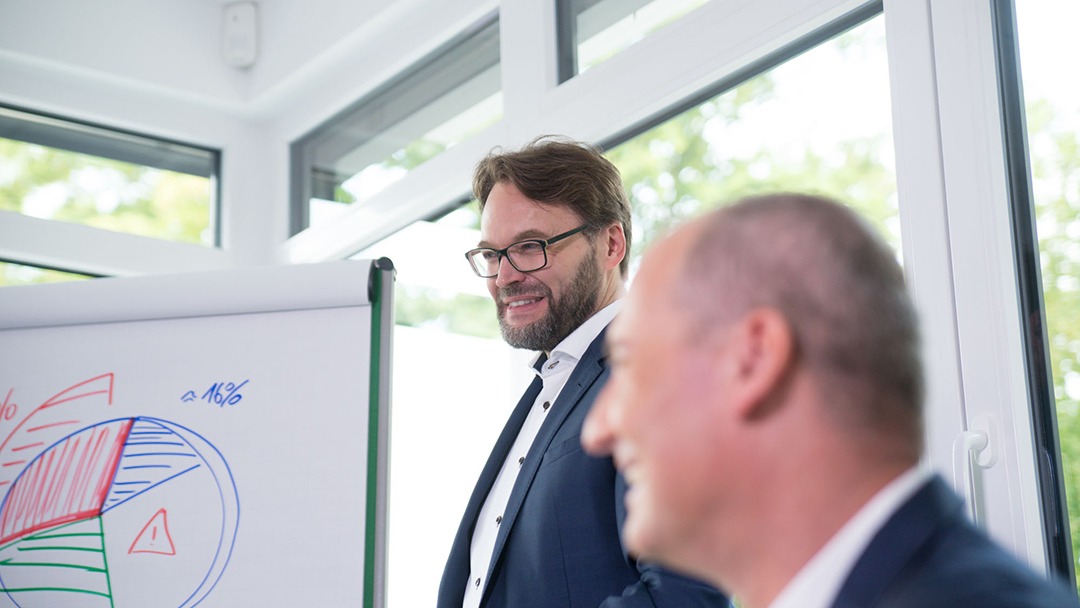Developmental Assessment Centers for HR Business Partners
COMPANY
Nestlé is the largest food and beverage company in the world, measured by revenues. It was founded in 1866 by Henri Nestlé. Nestlé currently has almost 2000 products through its main food and beverage business. Maggi, KitKat, Nespresso, Nescafé, etc. – to name but a few of the most famous products and brands. In 2018, Nestlé generated revenues of approximately 91.5 billion Swiss francs.
The company has more than 400 locations in 86 countries and employs almost 308,000 people worldwide. Its products are available globally in almost 200 countries. Nestlé is also a leader in research in the field of nutrition science. The company invests around 1.5 billion Swiss francs a year in research and development and currently has 17 R&D and test centers worldwide (click here for the latest sales figures and the annual review).
OBJECTIVES OF THE PROJECT
To support the changing needs of the business, Nestlé started to implement a new HR strategy in 2017 that included a new role profile for its HR Business Partners. The role was significantly expanded and the HRBPs were strengthened in their function. While the previous understanding of HR Business Partners was much more operational and administrative, strategic and business-related competencies are now noticeably gaining in importance. For example, a new HRBP Competency Framework defines competencies related to data analytics and insights as equally relevant as strategic or consulting skills in the context of change management.
The accelerated development of HRBPs is now a very central part of this global change process. In some Nestlé regions and markets, the development of the HR organization will also involve personnel changes. In other parts of the world, the focus will primarily be on the individual development of current incumbents. The objective of the project is to provide a robust assessment tool as the basis for the development of HRBPs.
GENERAL CONDITIONS
One of the central challenges for the development of the tool is that it must be usable for both selection and pure development purposes. Furthermore, the tool must have a high degree of cultural independence to be suitable for global roll-out. It must also be sufficiently lean and pragmatic so that the various markets with varying degrees of maturity in HR development functions can use the process effectively and systematically.
SOLUTION CONCEPT
The HRBP DAC (HR Business Partner Developmental Assessment Center) is an evaluation workshop tailored to the very specific competence profile of Nestlé HRBPs and it can be used for both development and selection matters. In contrast to classic Development Centers, which are aimed at junior managers, for example, the procedure has a number of special features that concern both the content and the implementation process.
IMPLEMENTATION
Conceptual design
The HRBP DAC was designed in a joint process with the Corporate HR function of Nestlé (involving key stakeholders from the regions) and Profil M. The final design of the HRBP DAC was developed in several workshops and video conferences.
HRBP DAC modules
The HRBP DAC comprises the following modules:
- Statement Presentation: In preparation for the DAC, all participating HRBPs prepare a statement presentation with their perspectives on the locally relevant challenges for the HRBP organization. The exercise can be adapted to different markets and regions so that the Statement Presentation serves as a genuine work sample with regard to shaping the upcoming change processes.
- Interview: Of course, the DAC also includes a competence-based interview in line with the HRBP Competency Framework and Nestlé’s Learning Agility Framework.
- Change Case: A very HRBP-specific case study describes the changes in HR policies, HR processes, and HR organization following a fictitious company takeover. The participants familiarize themselves with the case, interpret the change challenges, and formulate a concept for the next steps. Experience has shown that the case study is very suitable for making those competencies visible that are relevant to the preparation and implementation of change processes.
- Role Play Business Challenge: In this role-play exercise participants in their role as HRBPs meet with a manager who only half-heartedly implements certain HR processes. In addition to written instructions, there is also a preparatory video in which the manager leaves a Skype message for the HRBP, which reinforces the authenticity of the role play. Experience has shown that this role play can very clearly reveal the maturity, skill, and confidence of HRBPs in positioning themselves in relation to the business. The quality of consultation and the joint development of conclusive solutions for the business can also be assessed very well in this exercise.
- Role Play People Challenge: In an optional second role-play exercise, the HRBP once again meets with a manager, but this time the focus is much more strongly on personal advice and coaching the manager in dealing with specific leadership problems within the team. In this role play, the HRBP’s ability to act as a “Capability Builder” in relation to the business is particularly important. The problems and contents of all modules were deliberately chosen in such a way that they can be understood globally in a similar way, regardless of specific cultural conditions and local circumstances. The scenarios explicitly take place in a fictitious country with a fictitious currency and fictitious economic conditions, so that no particular similarities can be used as a reference or comparison point in any country. The feedback from participants and observers so far shows that the desired intercultural compatibility has been significantly increased as a result.
Process following the DAC
The HRBP DAC is organized in such a way that up to six participants can be invited to a one-day event. The observer conference takes place in the early evening. To ensure that the results are closely linked to the actual development planning, the follow-up process is structured as follows: After completion of all DACs in one week (e.g., in the case of 18 participants there are three consecutive implementation days) a stakeholder conference is held to which the local management team of the HRBP organization is invited. In this stakeholder conference, all participants are discussed, and the original development recommendations from the DAC observer conference are reviewed with the stakeholders. Here, the observations and findings from the DAC are not changed, and instead recommendations for next steps are discussed, which are to help with closing development gaps or improving strengths. This ensures that the action plan takes into account the needs of the participants’ local organization and the business context.
At the end of the stakeholder conference, individual feedback meetings are held with the participants, who then receive their individual final reports and development recommendations. Experience has shown that the stakeholder conference is a very good tool for anchoring the results of the DAC locally in such a way that all participants develop a strong sense of responsibility and pursue their development goals.
EXPERIENCE AND RESULTS
The DAC pilot took place in Dubai in 2018 with considerable attention from the global HR community. The DAC has subsequently been implemented in Italy, Portugal, Belgium, the UK, Switzerland, Brazil, Chile, and Malaysia, with further countries to follow. Feedback from participants, stakeholders, and local observers has consistently been so encouraging that more and more markets and regions are showing interest in the DAC. The combination of global standard and local customization options, the efficient method of implementing the DAC, the high specificity of the procedure within the HRBP Transformation Journey, and the good network with the relevant global and local stakeholders have certainly contributed to this effect.
This article was jointly written by the Nestlé Leadership and Talent Assessment Team and Profil M.

